The Universal Experience of Workplace Exhaustion
Picture this familiar scene: It’s 2:30 PM, and despite having a relatively normal morning, you’re suddenly hit with overwhelming fatigue. Your eyelids feel heavy, your focus wavers, and that mounting exhaustion makes even simple tasks feel monumental. You’re not imagining it – workplace tiredness affects millions of professionals daily, regardless of whether their jobs involve physical labour or desk work.
This comprehensive guide explores the science behind work-related exhaustion, backed by medical research and expert insights. You’ll discover practical, evidence-based strategies to combat fatigue and reclaim your energy throughout the workday.
The Hidden Causes Behind Your Daily Exhaustion
Sleep Deprivation: The Foundation of Daytime Fatigue
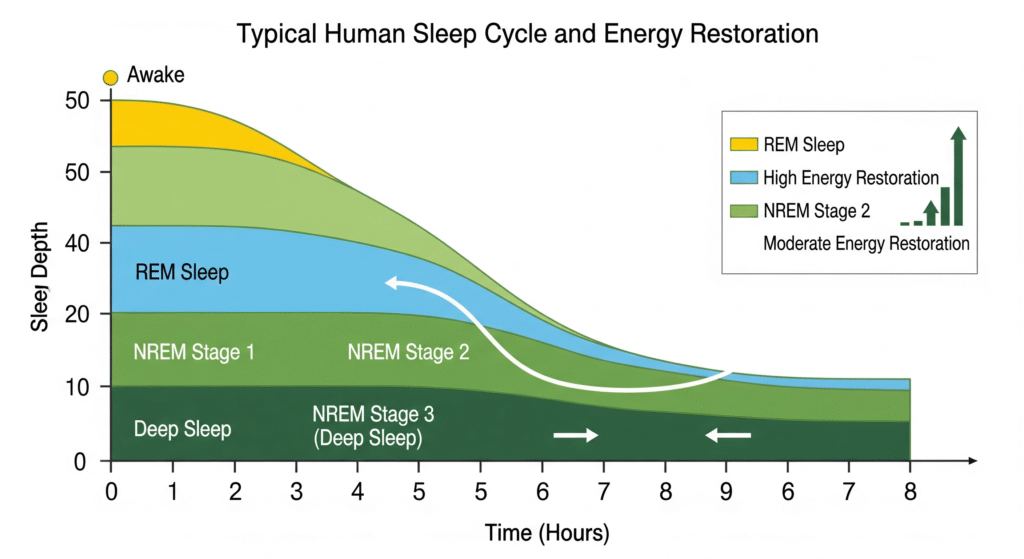
Quality sleep serves as your body’s primary energy restoration system. When you consistently get less than 7-9 hours of restorative sleep, fatigue becomes inevitable. According to the Centres for Disease Control and Prevention, approximately 35% of adults don’t get adequate sleep regularly, directly contributing to widespread workplace exhaustion.
During deep sleep phases, your brain eliminates metabolic waste while your muscles repair themselves. Skip this crucial recovery period, and your body operates on depleted reserves the next day. Sleep-deprived individuals often experience cognitive tiredness similar to mild intoxication, affecting decision-making and concentration.
Dr. Matthew Walker, a renowned sleep researcher at UC Berkeley, emphasises that irregular sleep schedules disrupt your circadian rhythm – your body’s internal 24-hour clock. This disruption intensifies natural energy dips, particularly the well-documented afternoon slump around 2-3 PM, when exhaustion peaks for many workers.
The Sedentary Lifestyle Paradox
Ironically, sitting all day without physical exertion can increase fatigue levels. When you remain stationary for extended periods, blood circulation slows, muscles stiffen, and your body shifts into energy-conservation mode. This physiological response explains why desk workers often experience exhaustion despite minimal physical activity.
Research published in the Journal of Occupational Health Psychology demonstrates that even light physical activity during work hours significantly reduces exhaustion and improves cognitive function. Movement stimulates blood flow, delivering oxygen and nutrients throughout your body while triggering the release of energy-boosting neurotransmitters like dopamine and serotonin.
Nutritional Factors and Hydration Status
Your food choices directly impact energy levels throughout the day. Poor nutrition creates a cascade of problems leading to fatigue: blood sugar fluctuations, nutrient deficiencies, and digestive stress all contribute to exhaustion.
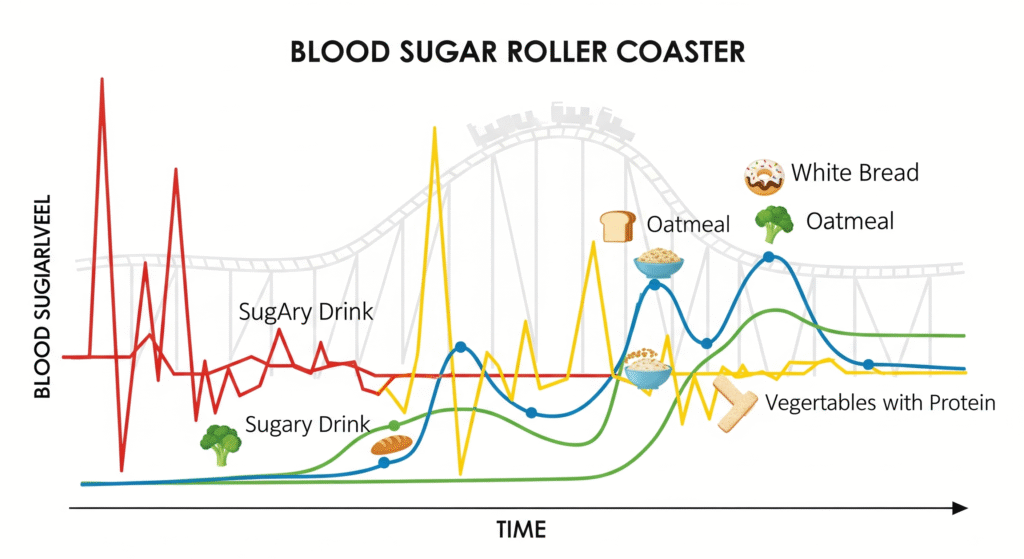
High-sugar snacks provide temporary energy spikes followed by dramatic crashes, intensifying tiredness within 30-60 minutes. Conversely, skipping meals causes blood sugar drops that trigger weakness and mental exhaustion.
Dehydration represents another overlooked cause of workplace fatigue. Even mild fluid loss (as little as 2% of body weight) reduces cognitive performance and increases feelings of exhaustion. Your body comprises approximately 60% water, making adequate hydration essential for optimal energy production.
Chronic Stress and Mental Overload
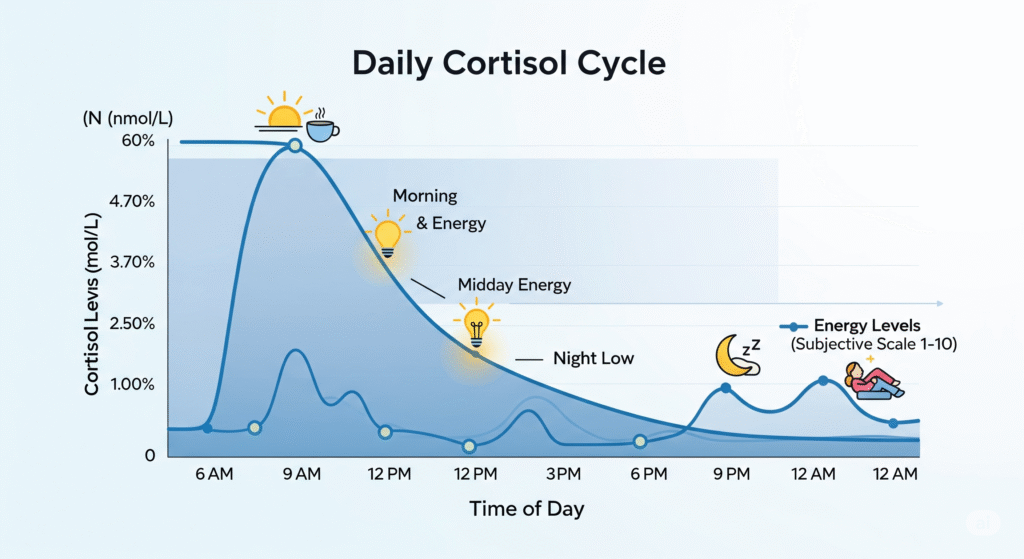
Workplace stress creates both mental and physical exhaustion. When you’re constantly managing deadlines, multitasking, or dealing with interpersonal conflicts, your nervous system remains in high-alert mode. This prolonged stress response depletes energy reserves and contributes to fatigue.
Dr. Christina Maslach, a leading burnout researcher at UC Berkeley, explains that chronic workplace stress leads to emotional exhaustion – a key component of professional burnout. Mental tasks require significant glucose consumption by the brain, and sustained cognitive effort without adequate breaks results in measurable fatigue.
Stress hormones like cortisol disrupt sleep patterns, creating a vicious cycle where poor rest increases stress sensitivity, which in turn worsens exhaustion the following day.
Medical Conditions and Hidden Health Factors
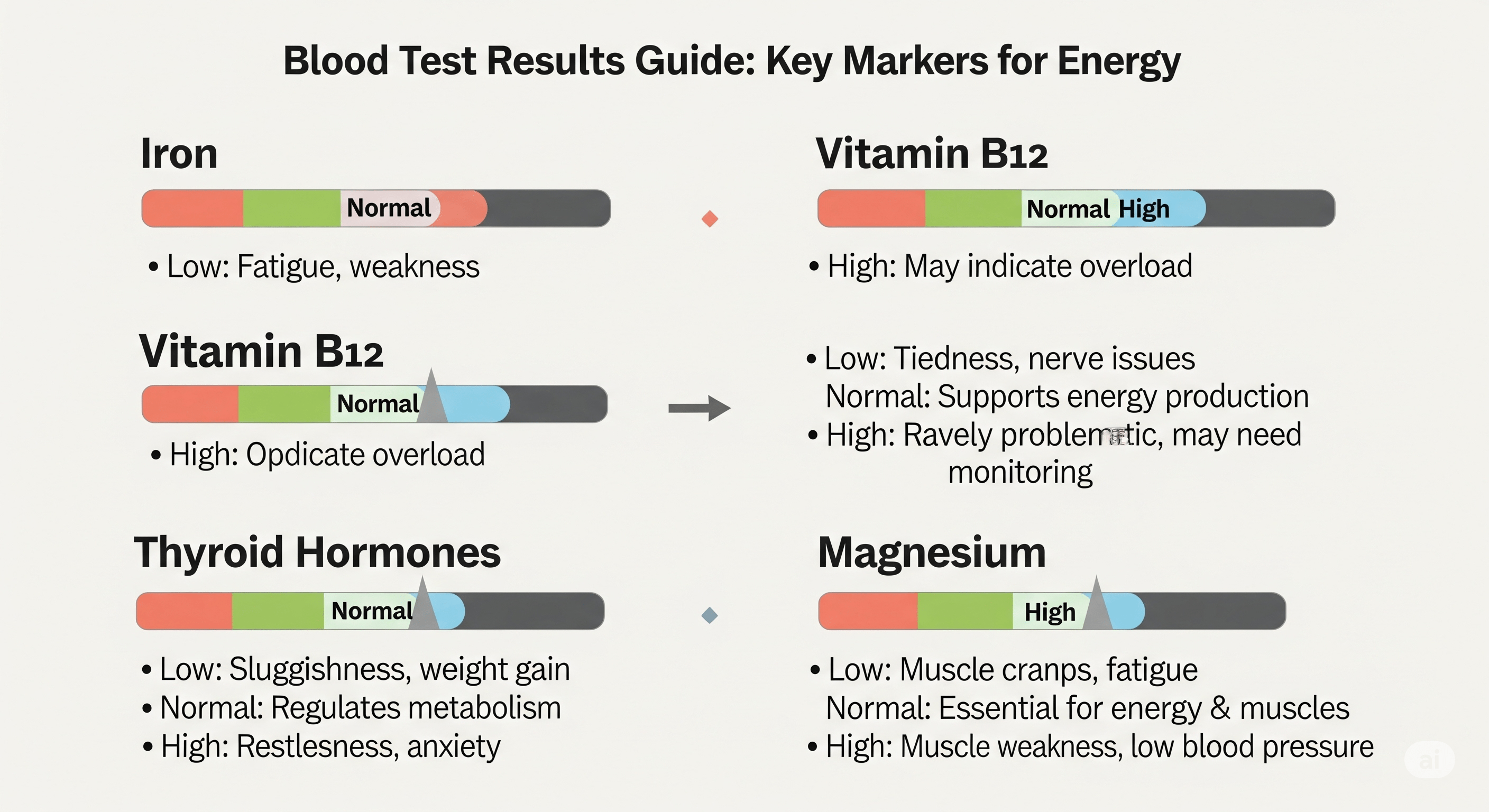
Sometimes persistent fatigue signals underlying health issues that require professional attention. Common medical causes of chronic exhaustion include:
- Anemia: Reduced red blood cell count limits oxygen delivery, causing persistent fatigue
- Thyroid disorders: Both underactive and overactive thyroid conditions contribute to exhaustion
- Sleep apnea: Disrupted breathing during sleep prevents restorative rest, leading to daytime fatigue
- Depression and anxiety: Mental health conditions frequently manifest as chronic exhaustion
- Autoimmune conditions: Diseases like rheumatoid arthritis or lupus often cause debilitating fatigue
Dr. Anthony Komaroff from Harvard Medical School emphasizes that persistent exhaustion lasting more than six months, especially when accompanied by other symptoms, warrants medical evaluation. Blood tests can identify treatable conditions like iron deficiency or hormonal imbalances that contribute to fatigue.
Evidence-Based Strategies to Combat Fatigue and Exhaustion
Optimize Your Sleep Architecture
Establishing consistent sleep hygiene dramatically reduces daytime fatigue. Research from the Sleep Foundation recommends these evidence-based practices:
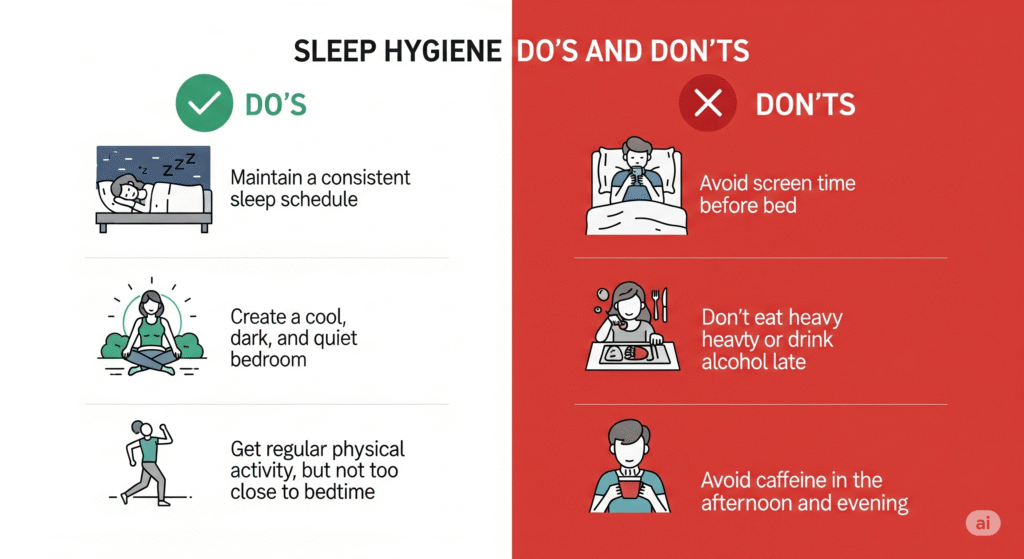
- Maintain regular bedtime and wake times, even on weekends
- Create a cool, dark sleeping environment (65-68°F optimal)
- Avoid screens 60 minutes before bedtime to prevent blue light interference
- Use blackout curtains or eye masks to block light pollution
For those struggling with sleep quality, cognitive behavioral therapy for insomnia (CBT-I) shows remarkable success rates in reducing fatigue. This approach addresses the psychological factors that contribute to sleep problems and exhaustion.
Implement Strategic Movement Breaks
Combat sedentary fatigue with purposeful movement throughout your workday. The American Heart Association recommends breaking up sitting time every 30 minutes with brief activity.
Effective anti-fatigue movement strategies include:
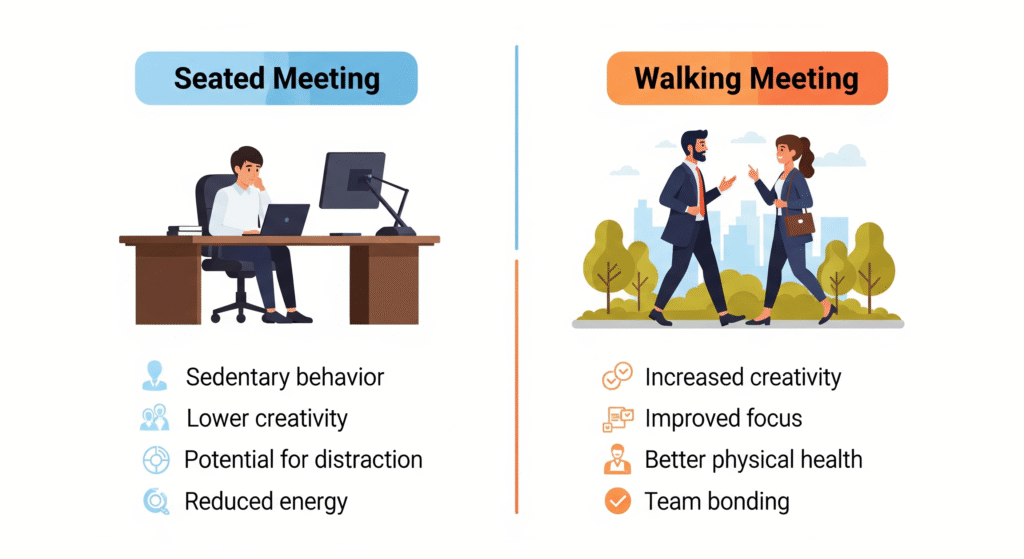
- Desk exercises: Shoulder rolls, neck stretches, and seated spinal twists
- Walking meetings: Conduct phone calls while walking when possible
- Stair climbing: Use stairs instead of elevators for 2-3 floors
- Micro-workouts: 5-minute sessions of jumping jacks or push-ups
Research from the University of Georgia found that low-intensity exercise increases energy levels by 20% while decreasing fatigue by 65%. These improvements occur because physical activity enhances mitochondrial function – your cells’ energy-producing structures.
Master Strategic Nutrition for Sustained Energy
Combat fatigue through intelligent food choices that maintain stable blood sugar levels. Registered dietitians recommend the “balanced plate” approach for optimal energy:
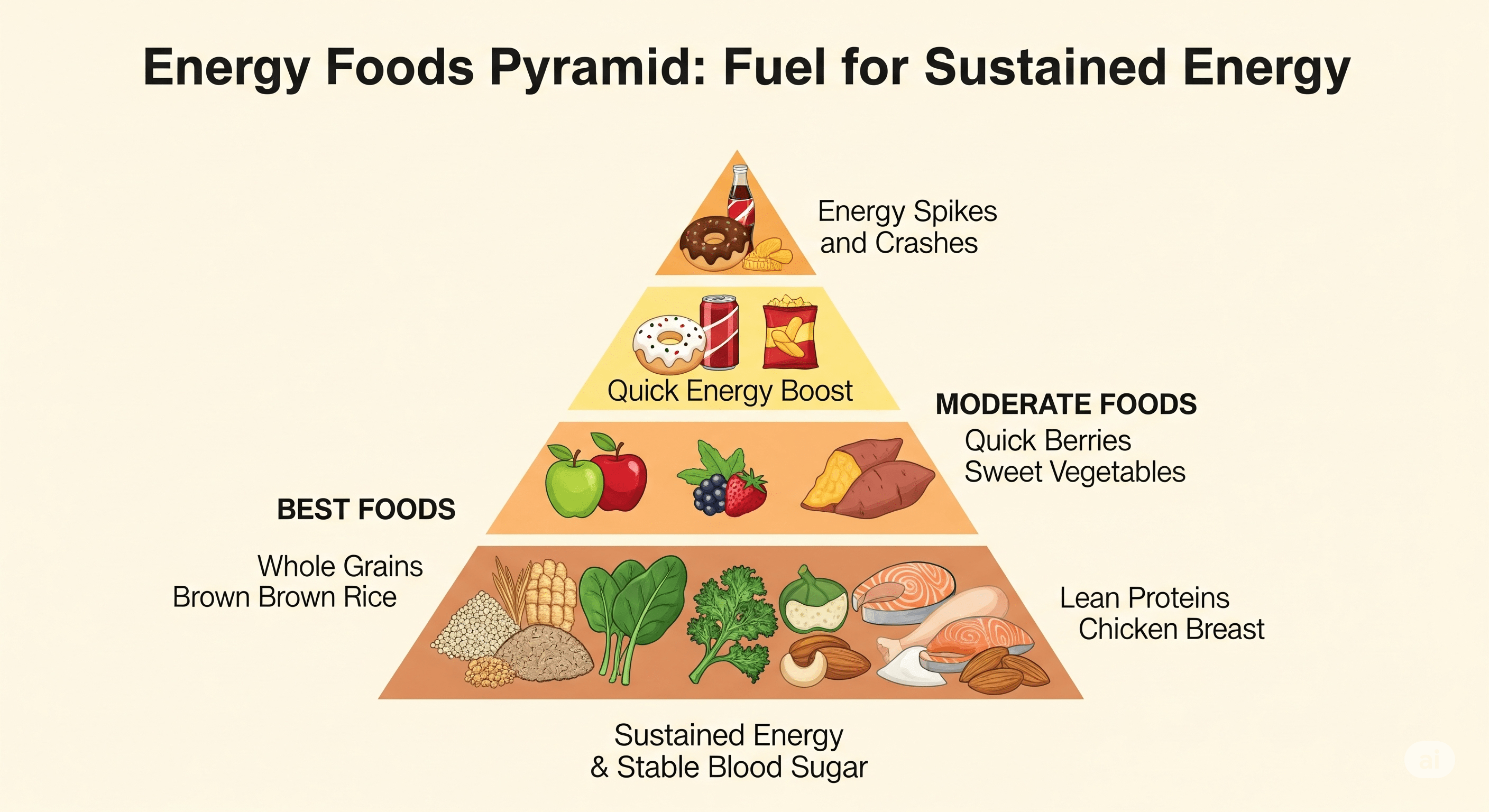
- Complex carbohydrates (40%): Whole grains, vegetables, legumes
- Lean proteins (30%): Fish, poultry, tofu, eggs
- Healthy fats (30%): Nuts, seeds, avocado, olive oil
This combination provides sustained energy release while preventing the blood sugar crashes that contribute to exhaustion. Time your largest meal earlier in the day when your metabolism is most active, and opt for lighter options during the afternoon to avoid post-meal fatigue.
Stay ahead of dehydration by consuming water consistently throughout the day. The National Academy of Medicine suggests approximately 15.5 cups of fluids daily for men and 11.5 cups for women, adjusted for activity level and climate.
Manage Stress to Prevent Exhaustion
Chronic stress management represents a crucial component of fatigue prevention. Dr. Jon Kabat-Zinn’s mindfulness-based stress reduction (MBSR) techniques have shown significant success in reducing work-related exhaustion.
Practical stress management strategies include:
- Deep breathing exercises: The 4-7-8 technique (inhale 4 counts, hold 7, exhale 8)
- Progressive muscle relaxation: Systematically tensing and releasing muscle groups
- Mindfulness meditation: Even 10 minutes daily reduces cortisol levels and fatigue
- Boundary setting: Learning to say “no” to excessive workload demands
Research published in the Journal of Occupational Health Psychology demonstrates that employees who practice regular stress management report 40% less fatigue and improved job satisfaction.
Optimize Your Work Environment
Environmental factors significantly impact fatigue levels throughout the day. Consider these evidence-based modifications:
Lighting optimization: Natural light exposure helps regulate circadian rhythms and reduces exhaustion. Position your workspace near windows when possible, or invest in a light therapy lamp (10,000 lux) for darker environments.
Temperature control: Research indicates that temperatures above 77°F increase fatigue and reduce cognitive performance by up to 15%. Maintain your workspace between 68-72°F for optimal alertness.
Air quality: Poor ventilation and low oxygen levels contribute to exhaustion. Ensure adequate airflow and consider adding plants to your workspace, which naturally improve air quality while reducing stress.
Strategic Use of Caffeine and Natural Stimulants
While caffeine can temporarily reduce fatigue, strategic consumption maximizes benefits while minimizing dependency. The Mayo Clinic recommends limiting caffeine intake to 400mg daily (approximately 4 cups of coffee) and avoiding consumption after 2 PM to prevent sleep disruption.
Alternative natural energy boosters include:
- Green tea: Provides sustained energy through L-theanine and moderate caffeine
- Matcha: Offers prolonged energy release without the crash associated with coffee
- Adaptogenic herbs: Rhodiola rosea and ashwagandha help combat stress-related fatigue
For those seeking to reduce caffeine dependency, gradual reduction prevents withdrawal fatigue while maintaining energy levels through other strategies.
Advanced Techniques for Persistent Exhaustion
Power Napping Science
Strategic napping can effectively combat afternoon fatigue when implemented correctly. NASA research demonstrates that 26-minute naps improve pilot performance by 34% and alertness by 100%.
Optimal napping guidelines:
- Duration: 10-20 minutes maximum to avoid deep sleep grogginess
- Timing: Between 1-3 PM to align with natural circadian dips
- Environment: Dark, quiet space with comfortable temperature
- Consistency: Regular nap timing helps establish beneficial patterns
The “caffeine nap” technique combines moderate caffeine intake (200mg) immediately before a 20-minute nap. As caffeine takes 15-20 minutes to reach peak effectiveness, you wake feeling refreshed from both the rest and the stimulant effect.
Circadian Rhythm Optimization
Align your daily schedule with natural biological rhythms to minimize fatigue. Dr. Michael Roizen from the Cleveland Clinic explains that working with your circadian cycle rather than against it dramatically improves energy levels.
Peak performance windows for most individuals:
- 9-11 AM: Optimal for complex cognitive tasks
- 11 AM-1 PM: Sustained attention and focus work
- 2-4 PM: Natural energy dip – ideal for routine tasks or breaks
- 4-6 PM: Second energy peak for collaborative work
Schedule your most demanding work during high-energy periods and reserve routine tasks for times when fatigue naturally peaks.
Technology and Fatigue Management
Modern technology offers innovative solutions for exhaustion management:
Blue light filtering: Use apps like f.lux or built-in blue light filters to reduce eye strain and support natural sleep cycles.
Activity tracking: Wearable devices monitor sleep quality, stress levels, and activity patterns to identify fatigue triggers.
Meditation apps: Guided mindfulness programs provide structured stress reduction techniques proven to combat exhaustion.
Environmental monitoring: Smart devices track air quality, temperature, and lighting to optimize your workspace for maximum alertness.
When to Seek Professional Help for Chronic Fatigue
Persistent exhaustion lasting more than three months despite lifestyle modifications warrants professional evaluation. Dr. Susan Levine, a chronic fatigue specialist at Mount Sinai Hospital, recommends seeking medical attention when fatigue:
- Interferes with daily activities and work performance
- Doesn’t improve with adequate rest and sleep
- Accompanies other symptoms like unexplained weight changes, mood alterations, or cognitive difficulties
- Significantly impacts quality of life and relationships
Healthcare providers may conduct comprehensive evaluations including blood tests, sleep studies, and psychological assessments to identify underlying causes of chronic exhaustion.
Building Long-Term Energy Resilience
Sustainable fatigue management requires consistent lifestyle practices rather than quick fixes. Research from the Harvard T.H. Chan School of Public Health identifies key factors for long-term energy maintenance:
Regular exercise routine: 150 minutes of moderate activity weekly reduces chronic fatigue by up to 40%.
Social connection: Strong relationships and social support networks buffer against stress-related exhaustion.
Purpose and meaning: Engaging in meaningful work and activities provides intrinsic motivation that combats fatigue.
Continuous learning: Mental stimulation through new challenges maintains cognitive energy and prevents burnout.
Creating Your Personal Anti-Fatigue Action Plan
Develop a customised approach to combat exhaustion based on your specific triggers and lifestyle constraints:
- Assessment phase: Track your energy levels, sleep patterns, and fatigue triggers for two weeks
- Implementation phase: Choose 2-3 evidence-based strategies that align with your schedule and preferences
- Monitoring phase: Evaluate progress weekly and adjust strategies based on results
- Maintenance phase: Establish sustainable routines that prevent fatigue recurrence
Remember that overcoming chronic exhaustion often requires patience and experimentation to find the most effective combination of strategies for your unique situation.
Reclaiming Your Energy and Vitality
Understanding the complex factors contributing to workplace fatigue and exhaustion empowers you to take targeted action. Whether your fatigue stems from poor sleep, sedentary habits, nutritional deficiencies, or chronic stress, evidence-based solutions exist to restore your energy and vitality.
Start with small, manageable changes – perhaps improving your sleep hygiene or incorporating brief movement breaks into your workday. As these habits become automatic, gradually add additional strategies to build comprehensive fatigue resistance.
Remember that persistent exhaustion isn’t a character flaw or something you must simply endure. By implementing the scientifically backed strategies outlined in this guide, you can overcome fatigue and rediscover the energy needed to thrive both professionally and personally.
Your journey from exhaustion to vitality begins with a single step. Choose one strategy that resonates with you and commit to consistent implementation. Your future energized self will thank you for taking action today
Further Reading
- Stomach Growl When Not Hungry? 7 Proven Causes & Fixes
- Heart Racing When Doing Nothing? 8 Proven Reasons & Fixes
- Why Do I Feel Stuck Even When I Have Everything? 7 Proven Reasons and Powerful Fixes
External Links & Research:
- According to the CDC’s latest sleep data and statistics, approximately 35% of adults don’t get adequate sleep regularly.
- The World Health Organisation workplace mental health guidelines emphasise the connection between workplace stress and fatigue.
- Research from the American Psychological Association’s annual stress report shows workplace fatigue affects productivity nationwide.

